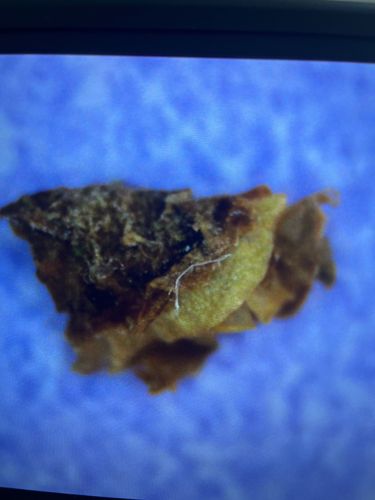Case-bearing Clothes Moth Larva
Scientific Name: Tinea pellionella
Order & Family: Lepidoptera (moths and butterflies), Tineidae (fungus moths, clothes moths, and allies)
Size: Larvae: 10-14 mm (0.4-0.55 inches) long; Adults: 10-14 mm (0.4-0.55 inches) wingspan.

Natural Habitat
Indoors, particularly in dark, undisturbed areas such as closets, attics, storage chests, and behind furniture. They thrive in environments where natural fibers (wool, silk, fur, feathers) are stored.
Diet & Feeding
Keratin-containing materials, including wool, fur, feathers, silk, felt, and other animal fibers. They can also feed on lint, dust, and synthetic blends if natural fibers are present.
Behavior Patterns
The larva constructs a silken case, often incorporating fibers from its food source, which it carries with it as it feeds and grows. It rarely leaves this case. The larvae are the destructive stage, feeding on various materials. Adults are nocturnal, poor fliers, and are typically seen fluttering rather than flying directly.
Risks & Benefits
Risks: Significant pest of natural fibers, causing damage to clothing, carpets, upholstery, and stored textiles. Can lead to economic loss for individuals and businesses. Benefits: No notable direct benefits to humans or the ecosystem; their role is primarily as decomposers of animal-derived materials, though this is often viewed negatively in human environments.
Identified on: 9/12/2025